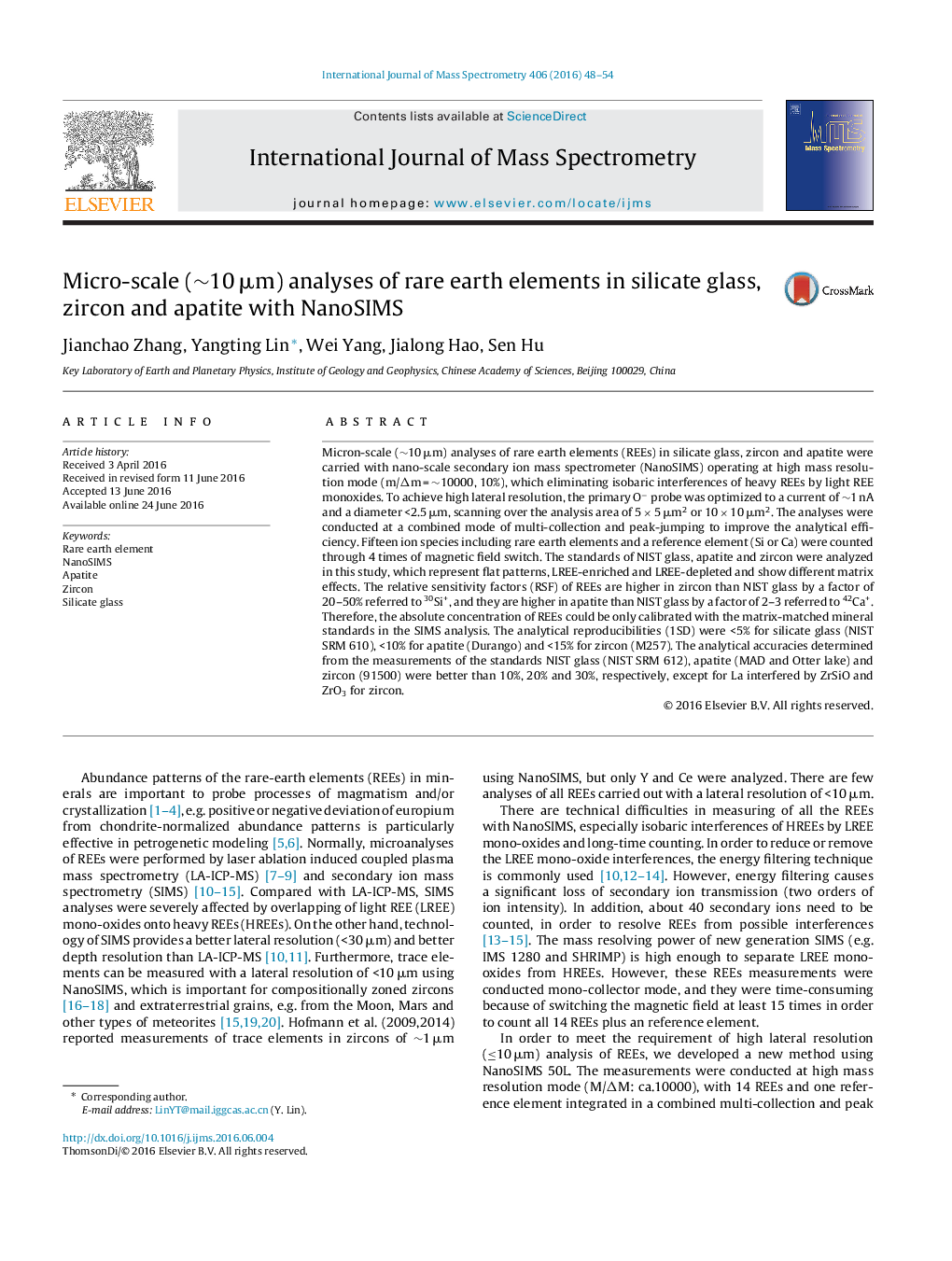| Article ID | Journal | Published Year | Pages | File Type |
|---|---|---|---|---|
| 1192560 | International Journal of Mass Spectrometry | 2016 | 7 Pages |
•All REEs of silicate glass, zircon and apatite were analyzed at a high mass resolution mode (m/Δm = ∼10000, 10% definition) using NanoSIMS, which eliminates isobaric interference of light REE monoxide to heavy REE.•The analysis was performed at a combined mode of multi-collection and peak jumping, in order to increase analytical efficiency.•Relative sensitivity factors (RSF) of REEs have been determined from the silicate glass, zircon and apatite standards.•The highest lateral resolution of REEs analyses up to 10 × 10 μm2 has been achieved.
Micron-scale (∼10 μm) analyses of rare earth elements (REEs) in silicate glass, zircon and apatite were carried with nano-scale secondary ion mass spectrometer (NanoSIMS) operating at high mass resolution mode (m/Δm = ∼10000, 10%), which eliminating isobaric interferences of heavy REEs by light REE monoxides. To achieve high lateral resolution, the primary O− probe was optimized to a current of ∼1 nA and a diameter <2.5 μm, scanning over the analysis area of 5 × 5 μm2 or 10 × 10 μm2. The analyses were conducted at a combined mode of multi-collection and peak-jumping to improve the analytical efficiency. Fifteen ion species including rare earth elements and a reference element (Si or Ca) were counted through 4 times of magnetic field switch. The standards of NIST glass, apatite and zircon were analyzed in this study, which represent flat patterns, LREE-enriched and LREE-depleted and show different matrix effects. The relative sensitivity factors (RSF) of REEs are higher in zircon than NIST glass by a factor of 20–50% referred to 30Si+, and they are higher in apatite than NIST glass by a factor of 2–3 referred to 42Ca+. Therefore, the absolute concentration of REEs could be only calibrated with the matrix-matched mineral standards in the SIMS analysis. The analytical reproducibilities (1SD) were <5% for silicate glass (NIST SRM 610), <10% for apatite (Durango) and <15% for zircon (M257). The analytical accuracies determined from the measurements of the standards NIST glass (NIST SRM 612), apatite (MAD and Otter lake) and zircon (91500) were better than 10%, 20% and 30%, respectively, except for La interfered by ZrSiO and ZrO3 for zircon.
Graphical abstractMicron-scale analyses of all rare earth elements (REEs) in silicate glass, zircon and apatite were conducted with NanoSIMS at a high mass resolution mode, which eliminated isobaric interference of light REE monoxide to heavy REE. All the ion species were measured in multi-collection combined peak jumping. The external reproducibilities (1SD) for silicate glass, zircon and apatite are better than 5%, 15% and 10%, respectively.Figure optionsDownload full-size imageDownload high-quality image (88 K)Download as PowerPoint slide
